Academy curriculum junior high school language courses materials publications school management textbooks
by sendaiben
leave a comment
The Academy Fluency Course
The Cambridge Academy is a six-year English program for junior and senior high school students at Cambridge English School in Sendai. You can read previous Academy posts here:
- Extensive Reading for Secondary Students (April 2015)
- Six Months In (September 2015)
- Year One (February 2016)
- Looking at Year Two (March 2016)
- Stocktake (March 2016)
- Shadoku explained (April 2016)
- Some improvements to the curriculum (April 2016)
- December 2016 update (December 2016)
- Cambridge Academy: Year Two and Three (March 2017)
- Cambridge Academy: Stocktake 2017 (March 2017)
- Cambridge Academy: Another Quantum Leap (April 2017)
- Cambridge Academy: Year Three Mid-Year Update (August 2017)
- Cambridge Academy: Year Three Student Progress (October 2017)
- Cambridge Academy: Year Three and Four (February 2018)
Background
The fluency course was not originally part of the Academy plan. Originally I wanted to run the Academy purely as an extensive reading course that would supplement what students were doing at school (and cram school/juku). This is much easier logistically and makes scheduling and running classes very simple. It’s also more profitable as you can fill classes with students of different levels.
This first iteration of the Academy did not work well. We found that without help it was difficult for students to learn English just from reading. We also found that students did not form a social bond with the school or their peers and thus missed out on motivation. Some students did well with the ER-only model, but many did not.
The second iteration of the Academy imitated SEG in having reading classes and communication classes. For the latter we used commercial textbooks. This worked better than ER-only, but there were problems with the tone, content, amount of material, and amount of repetition in the textbooks. The classes also worked well if run by an experienced engaged teacher but less well with less experienced teachers.
In order to deal with these problems, we created the Academy Fluency Course. It was written from scratch, extensively trialled with our classes here, and is designed to provide students with huge amounts of repetitive practice in reading, speaking, listening, and writing. Fluency is gained by repeating tasks you can already do, and the goal of the Fluency Course is not to teach students new language (although they do encounter huge amounts of new vocabulary and grammar in the course) but rather to allow them to practice enough to internalise some of the language they know and become fluent in using it.
The Cambridge Academy now consists of 140 minute classes: 20 minutes of workbook/school work/individual study, 60 minutes of input (extensive reading and listening), and 60 minutes of output (fluency course).
The Academy Fluency Course
Junior high school 1: Year One (these materials are in beta and are described in detail below).
The theme for this level is the students daily and school lives.
Junior high school 2: Year Two (these materials are in alpha).
The theme for this level is Japan. Students read and talk about different areas/aspects of Japan.
Junior high school 3: Year Three (these materials are not written yet).
The theme for this level is the world. Students read and talk about different areas/aspects of the world.
Senior high school initial course for first and weaker second years: (these materials are not written yet).
This level will provide a transition between the junior high school materials and the advanced course below.
Senior high school advanced course for stronger second and third years: (this is being written now).
This level is based on the PDR method and involves students reading, thinking, discussing, and writing about topics each week.
In 2017 we ran classes using the Year One materials. Halfway through the year we started writing the Year Two materials with the second and third graders. The plan is to write Year Three this year alongside the advanced high school course and to use them with the third year JHS and our advanced high school class.
Fluency Course Year One
The first year of the Fluency Course is based on the first year junior high school textbooks and has the following student components:
- 12 4-week student textbooks (April to March) with a total of 512 pages and 84,249 words
- a 48-unit student writing workbook
- 12 monthly reference sheets with questions and vocabulary
- 3 4-month student record sheets
There are also reference/class/teacher components
- 240 index cards with questions and answers (you will need one set for every two students in the class for pair work)
- 48 verb exercise answer sheets (you will need one for each student in your largest class)
- 48 Quizlet vocabulary and question datasets (available through the Quizlet website)
The main component is the student textbook, split into twelve montly booklets. It provides the vocabulary and questions for all the other components. The April book is slightly different from the others because it provides a gentle introduction. Each book contains the following:
Week One and Two
Vocab quiz (15 items from the timed reading texts, previewed by Quizlet)
3 timed reading texts with questions (April 45 words, May-July 60 words, August-November 80 words, December-March 100 words)
Verb conjugation table (to be read aloud -one verb per week)
Timed verb translation (30 items)
Example dialogue for reading and memorizing (April-July 3 exchanges, August-November 4 exchanges, December-March 5 exchanges)
Week Three
No example dialogue. Instead students write their own (length as above).
April has example dialogue.
Week Four
Instead of three short timed readings, there is one reading with three times the word count.
Teacher corrects and chooses the best student dialogues, then prints them for students to practice with.
April has example dialogue.
Results
The Fluency Course depends somewhat on the fact that students are also learning English at school. It is designed to cover the gaps in students learning, mainly speaking, reading, and writing exercises, and particularly drilling these.
So far results have been very encouraging. Our students are not all particularly academic or motivated, and it has been very encouraging to see all of them improve and succeed using the Fluency Course. More able/advanced students are able to challenge themselves within the course, while weaker ones can support themselves and keep up.
I will write a description of an output class in a future blog post.
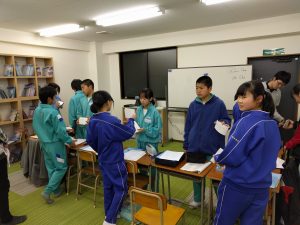
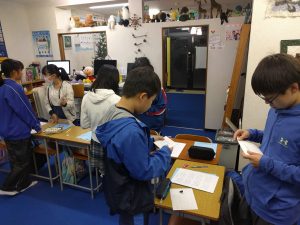
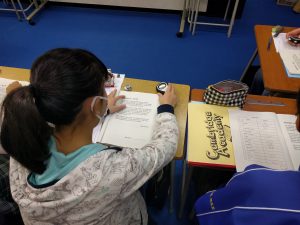
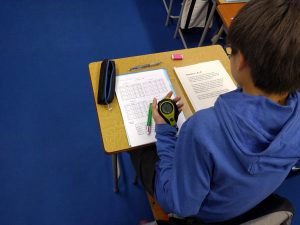
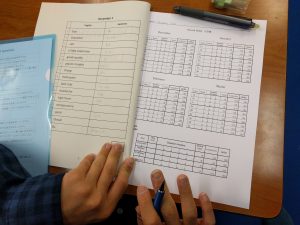
Leave a Reply